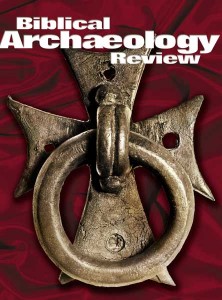Strata: How to Settle a Controversy
Vinland Map Provides Contrast to James Ossuary
Debates about the authenticity of artifacts are not limited to Biblical archaeology. However, disputants in other fields fight their battles differently. Rather than turning to a committee for an unequivocal decision, which then becomes the object of a rancorous debate, scholars try to settle their disputes through empirical testing, argument and counter-argument.
A case in point is the dispute over the “Vinland Map.” The artifact, which is now in the possession of Yale’s Beinecke Library, may be a 15th-century Viking map that shows Europe and Africa’s Atlantic coast with remarkable precision, as well as Greenland and Newfoundland, making it the earliest known cartographic representation of the New World. Or it may be a 1930s forgery by a German Jesuit priest, according to the leading alternative theory.
The map first surfaced in 1957, and philanthropist Paul Mellon soon purchased it for Yale, which kept it out of sight until Columbus Day, 1965. Skeptics immediately questioned the paleography and argued that Vikings simply did not make maps. Others argued that 15th-century Vikings could not possibly have known that Greenland is an island, as depicted by the map. The bulk of the debate, however, has been grounded in hard science. Researchers using the latest methods have examined the map on numerous occasions, each time bringing more empirical evidence to the debate and arguing over what conclusions can or cannot be drawn from it.
Already a library member? Log in here.
Institution user? Log in with your IP address.

